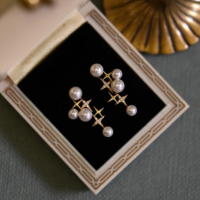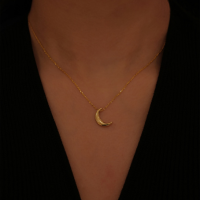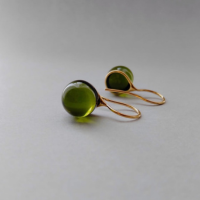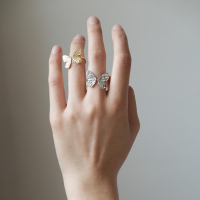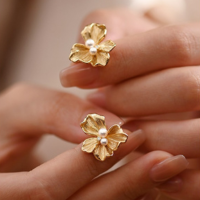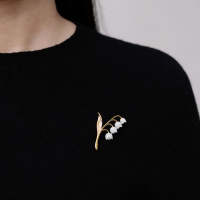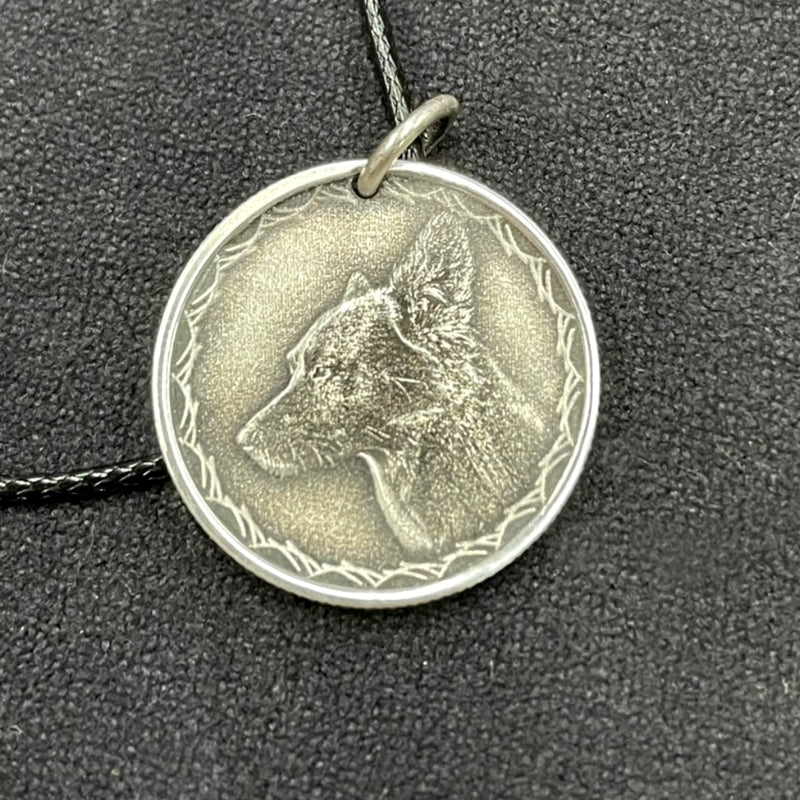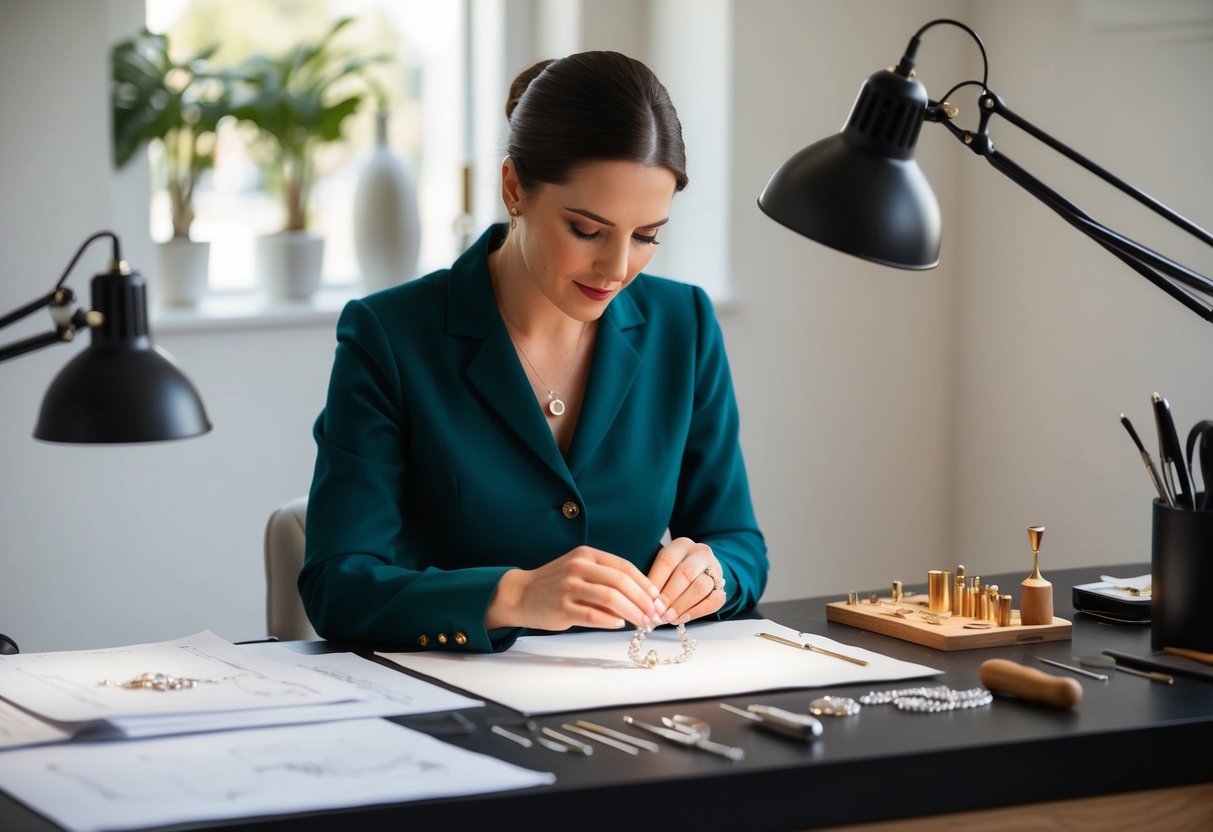
How to Communicate Your Vision Effectively to a Jewelry Designer
Check out our personalized jewelry collections! (kids drawing jewelry, coin jewelry, wire jewelry, fingerprint jewelry, handwriting jewelry, and more)
Creating a unique piece of jewelry is an exciting journey, and the key to a successful collaboration with a designer lies in how we communicate our vision. Being clear about our expectations helps the designer translate our ideas into reality. Whether it’s a custom engagement ring or a one-of-a-kind necklace, our ability to express what we want is crucial in ensuring the final piece is exactly as we imagined.
We might start by reflecting on what inspires us, thinking about colors, styles, and materials that resonate with our aesthetic. Sharing inspiration images, sketches, or even describing the emotions and memories we want the piece to capture can significantly enhance understanding between us and the designer. It’s a collaborative effort, and being prepared with specific details will ultimately create a more meaningful jewelry piece.
The technical aspects of jewelry design cannot be overlooked. As we work with the designer, discussing the feasibility of certain elements ensures the design's practicality. This dialogue helps us appreciate the craftsmanship involved and leads us to a final piece that balances beauty and function.
Key Takeaways
- A clear and detailed vision is essential.
- Sharing inspirations enhances designer understanding.
- Discuss technical details for practicality.
Understanding Your Vision
To effectively communicate your vision to a jewelry designer, we need to clearly define our style, understand the story or inspiration behind our ideas, and set the scope and scale for our project. Let's explore these key elements.
Identifying Your Style
Identifying our style is akin to discovering our unique signature. It involves considering preferences for materials such as gold or silver, gemstone choices, and the kinds of textures that appeal to us. Do we lean towards minimalist designs or something more ornate? A mood board can serve as a powerful tool here. By compiling images, colors, and textures that resonate with us, we create a visual reference that speaks louder than words. Sharing this board with our designer can set a solid foundation for our collaboration. Examining our favorite jewelry pieces can reveal patterns in our taste, assisting us in clearly conveying our preferences.
Story and Inspiration Behind Your Idea
The story behind our vision breathes life into our jewelry concept. Personal experiences, cultural influences, or emotional connections might spur our ideas. Whether it's inspired by a memorable journey, cherished memory, or symbolism personal to us, explaining this to the designer can add depth and meaning to the piece. We should reflect on what elements of our story are crucial to us. Narrating these stories helps the designer capture the essence of what we truly desire. This storytelling aspect not only guides the design process but also ensures our final piece holds personal significance, transforming it into a cherished keepsake.
Setting the Scope and Scale
Setting the scope and scale refers to the logistics of the design project. We'll need to clarify whether we're envisioning a single item like a ring or a more extensive collection such as a necklace and earrings set. Considerations around budget, metal quality, and gemstone carat weight are vital. Setting clear boundaries in these areas helps manage expectations on both sides. Communicating our timeline, whether for a special occasion or in general, allows the designer to align their schedule with ours. Having these parameters well-defined can lead to a smoother, more efficient design process, ultimately resulting in a piece that matches our vision within our means.
Visualizing Your Design
When communicating your vision to a jewelry designer, it is crucial to express ideas clearly and succinctly. This involves using mood boards, sketches, and selecting colors and materials to create a cohesive and compelling concept.
Creating Mood Boards
Mood boards offer an excellent way to convey the feel and aesthetic you’re aiming for. We can gather a collection of images, textures, and designs that resonate with our desired outcome.
Using tools like Pinterest or physical collages, we assemble visuals that reflect personal tastes and style inspiration. Key elements might include images of similar pieces, fashion spreads, or even architectural details.
This provides the designer with a solid foundation to understand our vision, ensuring they grasp the ambiance and essence we have in mind.
Sketching Preliminary Concepts
Sketching is an essential step in translating abstract ideas into tangible designs. Our early sketches act as blueprints, helping to visualize how elements will come together.
We don’t need to be professional artists; simple drawings highlighting shapes, patterns, and features suffice. Consider labeling parts of the sketch or annotating details to clarify intentions.
This practice facilitates dialogue with the designer, allowing us to receive feedback and make adjustments, ensuring alignment with our vision.
Selecting Colors and Materials
Choosing the right colors and materials is vital for bringing our concept to life. We can examine fabric swatches, gemstone color charts, and metal samples to determine what complements our design.
It’s helpful to consider factors such as durability, aesthetic harmony, and how these choices fit into the wearer’s lifestyle. We might opt for vibrant gemstones for a statement piece or modest hues for everyday elegance.
Presenting these preferences to the designer guides them in crafting a piece that embodies our unique vision while adhering to practicality and style.
Communicating with The Designer
Ensuring our vision for a piece of jewelry is clearly understood by the designer is crucial. This involves using precise language, engaging in collaborative techniques, and offering thoughtful feedback.
Effective Descriptions and Terminology
When communicating, we must use clear, specific language. Describing materials, shapes, and colors accurately helps the designer grasp our vision. Instead of saying, "I want something shiny," specifying "a polished silver finish" paints a stronger picture. Familiarize ourselves with basic jewelry terminology, like bezel setting or pavé, to avoid miscommunication. Visual aids such as sketches or photos can bridge gaps when words fall short. It’s critical that we convey our ideas with clarity and precision to avoid revisions and misunderstandings.
Collaborative Discussion Techniques
Effective dialogue involves not only expressing our desires but also actively listening to the designer’s input. This back-and-forth ensures mutual understanding and creativity. Open-ended questions like "What do you think about incorporating emeralds?" invite the designer to share expertise. We should be open to suggestions that enhance the design. Documenting conversations with notes or recordings helps maintain alignment throughout the project. Respectful collaboration fosters a positive working relationship, encouraging better outcomes.
Providing Constructive Feedback
Providing input requires tact and specificity. Instead of saying, "I don’t like this," we should highlight what needs changing, such as "Could we try a thinner band?" Keeping our feedback focused on the design and not personal preferences minimizes conflict. Timing matters; giving feedback promptly prevents costly adjustments later. Acknowledging the designer’s skill and effort encourages a more receptive atmosphere. Our feedback should guide the project closer to its ideal realization without discouraging the designer's creativity.
Technical Considerations
When communicating our vision to a jewelry designer, understanding technical aspects is essential. This involves being aware of design constraints, manufacturing processes, and the financial considerations related to budgeting and pricing.
Understanding Jewelry Design Constraints
Jewelry design involves various constraints that we must consider. Factors such as material properties, stone settings, and structural integrity influence how a piece can be crafted. For instance, softer metals may not support large gemstones securely. We need to understand the implications of these constraints to ensure our vision aligns with what's feasible within the world of jewelry design. It's crucial to discuss these elements with the designer to avoid potential mismatches between our vision and the finished product. Knowing limitations regarding the size, shape, and weight that can be supported without compromising the piece enables us to make informed decisions.
Discussing Manufacturing Processes
Manufacturing processes play a crucial role in bringing our design to life. Techniques such as casting, 3D printing, or hand-crafting each come with distinct considerations that impact the final design. For instance, intricate patterns may require particular methods to achieve precise detailing. It's important to discuss production timelines and how different methods could affect durability and finish. Are we looking for a highly polished metal surface, or do we prefer a more matte look? These decisions can determine the manufacturing process, and our choice can influence both cost and production time.
Budgeting and Pricing Discussions
Budgeting is a critical factor when planning jewelry design. We must be clear about our financial limits and priorities. This involves discussing material choices, as precious stones or metals like gold or platinum can dramatically affect costs. Similarly, considering whether we prioritize custom design or ready-to-wear versions is vital. Pricing strategies could also involve considering the cost of labor and any bespoke craftsmanship elements required. Our designer can offer options to align our vision with our budget, advising where changes can be made to reduce costs without sacrificing quality. It's about finding a balance between our vision and what we can afford.
Finalizing the Design
Once our initial concepts are outlined, we focus on detailed reviews and decision-making to ensure our ideas come to life exactly as envisioned. Let's explore the importance of careful evaluation and making informed choices in this creative journey.
Approving Sketches and Renderings
Our collaboration with a jewelry designer often starts with detailed sketches and renderings. These visual representations help us visualize every aspect of the piece, from gemstone placement to intricate detailing.
When reviewing these artworks, it's vital to assess how well they capture the essence of our vision. We should consider elements such as proportion, symmetry, and style. It's helpful to compare the sketches with our initial ideas to see if they align accurately.
Adjustments should be requested if specific aspects of the design do not resonate with us. Designers typically welcome feedback and can refine sketches to ensure we feel confident with the direction. Clear communication is crucial at this stage to ensure any modifications address our preferences.
Decision Making on Final Adjustments
This phase is about confirming the small yet important details that might make a significant difference. We might consider options such as metal types, stone settings, and finishes that affect the final look.
It's beneficial to discuss potential adjustments like size variations or alternative stone choices with the designer. This is the time to explore possibilities without making hasty decisions, as these modifications will be permanent.
Making informed choices requires weighing aesthetic preferences against practical considerations, such as durability and budget. Consultation with professionals can provide insights that guide us towards satisfactory outcomes. Once we agree on these adjustments, we set the stage for creating a piece that perfectly matches our vision.
Frequently Asked Questions
In our journey to create the perfect piece of jewelry, sharing specifics and emotions are critical. Clear communication is essential to align with the designer in both aesthetic and functional aspects.
What are the best ways to articulate my design ideas to a jewelry designer?
We should use clear visual aids, such as sketches or mood boards, which can effectively convey our vision. Describing detailed characteristics like style, material, and inspiration helps the designer understand our concept better.
Can you suggest effective communication strategies for collaborating with jewelry designers?
Regular communication through emails or meetings ensures both parties are on the same page. We can document key discussions and decisions to avoid misunderstandings. Keeping an open line for questions helps smooth the collaboration process.
What information should I provide to a jewelry designer to ensure my vision is accurately represented?
We need to provide precise details such as dimensions, gemstone preferences, metal choices, and style inspirations. Sharing any relevant background information about the jewelry's purpose or significance can also guide the designer's creative process.
How can I convey the emotional significance behind my custom jewelry design idea?
Expressing personal stories or emotional connections that inspired the piece can guide the designer to infuse our sentiments into the design. Meeting with the designer to discuss the significance can help them bring our emotions to life in the piece.
What are some tips for providing clear feedback to a jewelry designer during the creation process?
Offering specific and constructive feedback on drafts or prototypes is essential. We should focus on what aspects work well and which need adjustments. Being as descriptive as possible allows the designer to make precise changes.
How do I ensure that the final jewelry piece reflects my personal style and concept?
Checking in at different stages of the design and creation process helps ensure alignment with our vision. Keeping open communication with the designer about style preferences and checking prototypes or mock-ups can guarantee the final piece meets our expectations.

